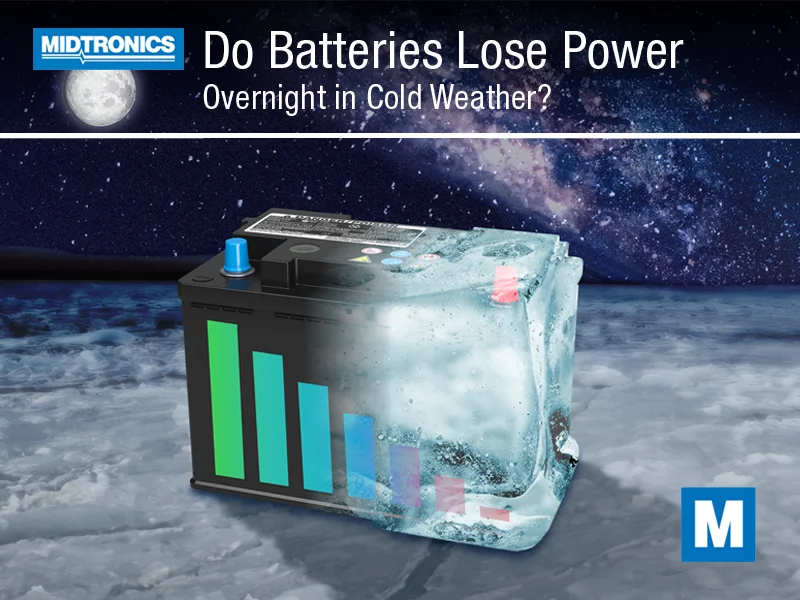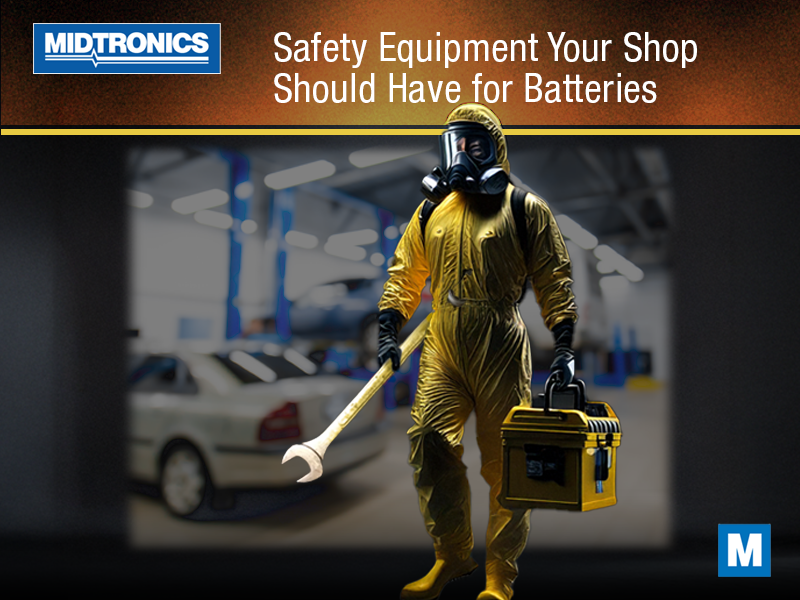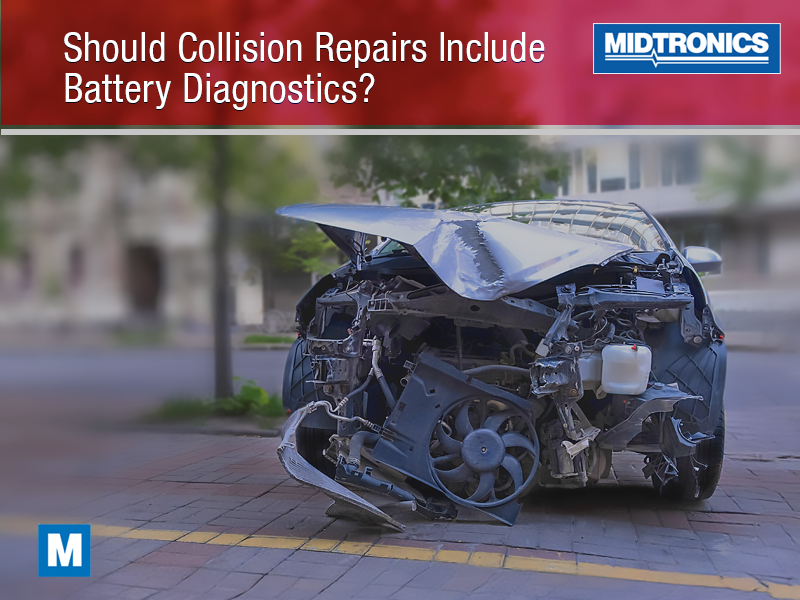In the midst of a cold spell, a common sight unfolds. Drivers fire up their cars amid a frosty fog, scraping ice from windshields and shoveling out their driveways. Inevitably, hundreds, or even thousands, of calls will be placed to roadside assistance services like AAA, and tow trucks head out to jump-start many of the cars.
Dead batteries are still the leading reason for roadside assistance calls in the US, and it spikes in cold weather. Does the cold drain batteries in just a handful of hours of being parked in a driveway or office lot? Here’s what you need to know, and what you should share with your customers about batteries that die in the winter.
Why Do Batteries Die Faster in Cold Weather?
Batteries, whether they’re powering your smartphone or your car, rely on chemical reactions to work. Cold temperatures can slow these reactions, causing the battery to discharge or lose power more quickly. It’s the same principle as that of engine oil, where kinetic energy is faster at warmer temperatures, causing the oil to be thinner. But as oil gets colder, it’s thicker and pours more sluggishly because the kinetic energy is that much slower.
According to ThoughtCo, cold batteries discharge faster than warmer ones. A lower current is produced as the battery’s temperature is reduced, even at the same state of charge. This is due to an increase in the internal resistance of the cells, which reduces the current that can be supplied.
In the case of car batteries, freezing weather can drain the battery power by up to 60%. At -22 F, the capacity is reduced by approximately half. Even at the freezing point – just 32 F – a battery’s capacity is reduced by approximately 20% compared to an ambient temperature of 70 F. It’s all because, as mentioned, the chemical reaction happening inside the car battery slows down in the cold, reducing its ability to hold charge.
How Long Does It Take for a Battery to Die in the Cold?
There’s a misconception that needs to be corrected. The state of simply being cold doesn’t kill a car battery unless the mercury plummets to -76 F and the electrolyte solution freezes. At that point, the plates inside the battery can be severely damaged, the case bulges, and there’s virtually no current that can flow out of it. When the battery thaws, the electrolyte can leak if the case has been cracked.
If the battery isn’t fully charged when the engine is shut off, the freezing point could be considerably higher.
Aside from freezing, batteries don’t actually die on their own in the cold weather. What drivers believe to be a dead battery is one that doesn’t have enough amperage to overcome the engine’s high resistance during starter cranking.
The time it takes for a battery to discharge in the cold can depend on several factors, including the type of battery, its age and condition, and the exact temperature. However, if left in freezing temperatures overnight, even a healthy battery can experience significant power loss.
Lithium-ion batteries are generally more resistant to cold-induced discharge, but even they can also struggle in freezing temperatures. If you’ve ever noticed your phone battery draining rapidly in the cold, this is why. However, Li-ion car batteries are seldom used, and they’re cost-prohibitive to use simply for cold weather purposes.
Ways to Prevent It
Of course, equipping a vehicle with the appropriate battery is key. Cold cranking amperage (CCA) ratings are employed to ensure a car has the necessary power for cold starts. Typically, a four-cylinder engine will require a battery with about 400 CCA and up, but many SUVs and pickups will require 600 CCA or higher for cold starts. That leaves some flexibility for slow starts, especially if the battery isn’t fully charged when it’s parked.
Protecting your batteries from the cold can help prevent them from discharging overnight. For your car battery, this might mean parking in a garage or using a battery warmer.
Plugging in a block heater, if the car is equipped with one, can help significantly with cold starts. Although it doesn’t increase the battery’s temperature, it does increase the engine’s temperature to reduce starting resistance. It avoids fighting against cold, syrupy oil and metal engine components that contract and constrict internally, making the starter work harder.
Also, make sure all lights are off and doors are completely closed as any light will drain the battery overnight.
How to Present This Information to Customers
Every repair shop will have an influx of customers with weak or dead batteries when the harsh winter weather arrives. Clearly and concisely explaining the reasons behind the problem and ways to prevent it are key to maintaining a good relationship.
- Mention that the problem likely isn’t cold weather related, but one that’s been present awhile and symptoms presented because the conditions were right.
- Explain that the shop has a practice in place to test the battery on every visit, identifying batteries in less-than-perfect condition before issues occur.
- Discuss how the cold affects the chemical reactions inside a battery and how this leads to faster power loss.
- Offer practical tips for protecting their batteries from the cold, and reassure them that with proper care, their batteries can still perform reliably even in winter.
- And when a battery fails a test, communicate that a timely replacement will help avoid situations like a dead battery in the depths of a cold spell.
As a repair shop, ensure you follow through with proper battery testing practices to help avoid situations resulting in unhappy customers – especially those that could have been avoided otherwise. Make testing each battery a core practice at vehicle check-in, and have a cheat sheet of replacement options on hand for your most popular models.




